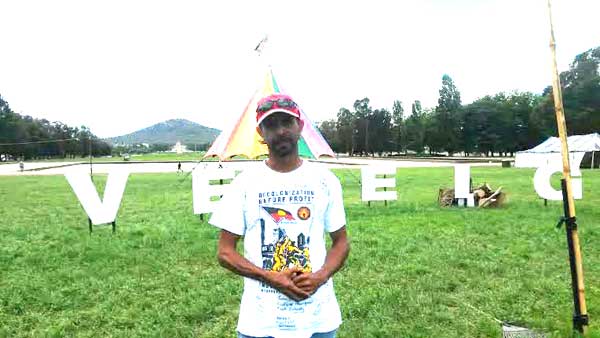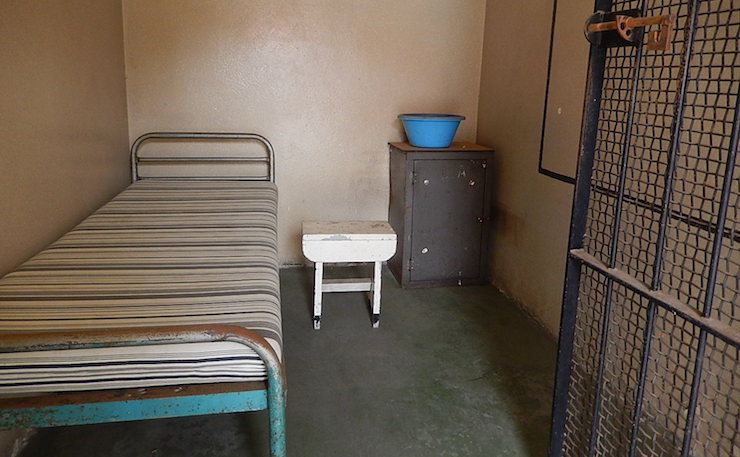It has been 24 years today since the Royal Commission into Aboriginal Deaths in Custody. The long-running commission, which stretched from 1987 to 1991, investigated 99 deaths in custody. But do you remember any of their names?
It’s almost as if those 24 years meant nothing.
Nearly a quarter of a century on, Aboriginal protestors are still crying on the streets, attempting to break the seemingly impenetrable walls of Parliaments all across the country with the reality behind the figures.
Aboriginal men, women and children still die behind bars, victims of their race, their circumstance and their geography – the toxic cocktail of factors that sees them jailed at the highest rates in the western world.
The Royal Commission found its own terms of reference were flawed – it was not that Aboriginal prisoners were dying in custody at disproportionate rates to non-Indigenous prisoners, but that they were severely overrepresented in the criminal justice system.
We all know that nothing has changed, and in fact things get worse every year as culturally appropriate legal services remain severely underfunded, and law and order policies appealing to the base fears of an electorate accustomed to viewing Aboriginal people as the ‘other’ impact more harshly on the most vulnerable people in this country.
Between December 2013 and 2014, the number of Aboriginal men in custody increased by 6 per cent. For Aboriginal women it was even worse – an increase of 12 per cent.
As of 2014, Aboriginal and Torres Strait Islander prisoners make up 27 per cent of the overall prison population, despite being less than 3 per cent of the total population.
While politicians like WA Premier Colin Barnett consistently argue that the number of black deaths in custody are less than non-Indigenous prisoners, you can’t measure the situation purely through numbers.
The deep and profound hurt felt over Aboriginal deaths in custody in stems from the question: Would this have happened to a white person?
In simple terms, we never hear of these cases happening to white prisoners.
Cases like Mulrunji Doomadgee, who died on a Palm Island watchhouse floor with a liver cleaved in two and injuries akin to a plane crash victim after being arrested for singing ‘Who Let the Dogs Out’ at a police officer.
Cases like the respected Warburton elder Mr Ward, who died after being cooked alive in the back of a shoddy prison van in 2008.
Cases like Juliekha Dhu, who died in South Hedland in horrendous pain after being refused adequate medical care. She was locked up for failure to pay fines.

We need to do more than ask the basic questions – how did they die and who was responsible – and look at the deeper and more difficult ones; why were they jailed in the first place and what circumstances in their life led them to their contact with the criminal justice system? How has the historical and present day disadvantage they were born into pave the way for such avoidable and tragic deaths?
These questions are buried in the individual death reports of the Royal Commission into Aboriginal Deaths in Custody, all 99 of them.
Many died of suicide while others died of the chronic ill-health that afflicts so many blackfellas. Still others died in suspicious circumstances.
But all of these 99 black deaths in custody had a story that is all too common – that of a historical apathy and a failure to deal with the ongoing consequences of colonisation and oppression, of failing to deal with the sky-high rates of Aboriginal child removal, of failing to eradicate ridiculous policies like jailing in exchange for clearing fines.
The 99 deaths in custody of the Royal Commission included several high profile names. John Pat, a teenager who was bashed to death by off-duty police officers in Roebourne in 1983. David Gundy, who was shot and killed while police entered his Marrickville home in 1989. Malcolm John Smith, who tragically killed himself with a paintbrush to the eye after a lifetime of sorrow stemming from his removal from his family as a child.
But there are those who still remain anonymous, absent from our national conscience to this day.
There are too many to name and detail in just one article, but I want to highlight one: Harrison Day.
Described by Commissioner Hal Wootten as a “sober, harmless man who had done no injury to anyone”, Mr Day was locked up by a “ritualistic application of an outmoded law which serves no purpose”.
He was jailed for a failure to pay a fine of $10 for past convictions of being drunk and disorderly.
“Harrison, who was richer in time than in money, never paid his fines, and in due course, after more court and police work, a warrant would issue and he would be arrested and locked up again”, Commissioner Wootten wrote.
An epileptic, Mr Day died after being transferred from his cell to Echuca District Hospital on 23 June 1982. On his arrest, he was sober and no risk to anyone. He was not a criminal but his arrest was lawful because of the criminalisation of public drunkenness.
Commissioner Wootten found his death would have been entirely avoidable if he had been properly supervised, but that the supervision accorded to him would not have been suitable even for a fit prisoner.
24 years on from the Royal Commission, what ever happened to Mr Day’s family, what ever happened to the Aboriginal community who supported and loved him?
The individual death report includes a beautiful description of Harrison Day.
“Harrison Day, who appeared such a nobody, so poor and homeless by the standards of the white community, was rich in terms of the love, respect and support accorded him in the Aboriginal community.
“He had not one home, but a number where he was welcome and between which he moved, although he sometimes preferred to sleep in the open.
“On the day of his death he walked along the street happily swinging his arms; he was good-natured and did not became abusive or aggressive even when drunk.
“For a man born into a dispossessed and disadvantaged community at a time when little was being attempted to remedy the wrongs, handicaps and prejudice which its members suffered, who was orphaned at an early age, denied all but a minimum education, and while still a young man became a victim of injury induced epilepsy serious enough for him to be refused a driver’s licence, Harrison had done well.
“He had, like the rest of the Aboriginal community, survived, no mean achievement in itself.”
Harrison Day is not remembered today. But he should be, just as we must remember the other 99 individual death reports investigated by the Royal Commission.
They also survived, just like Harrison Day.
But the one thing we don’t talk about is the others who have survived, the people who they leave behind who still love and grieve for them in the 24 years following the commission.
We don’t talk about the communities that are shattered, the lives that are torn apart because one of their own was locked up, and died because of it.
We do not talk about the healing because so often it is hard to heal without justice.
In the absence of any improvement in 24 years, we must think of the families and communities who are still wondering what happened to the Royal Commission they waited and hoped for, but which ultimately failed to deliver this justice.
Donate To New Matilda
New Matilda is a small, independent media outlet. We survive through reader contributions, and never losing a lawsuit. If you got something from this article, giving something back helps us to continue speaking truth to power. Every little bit counts.




